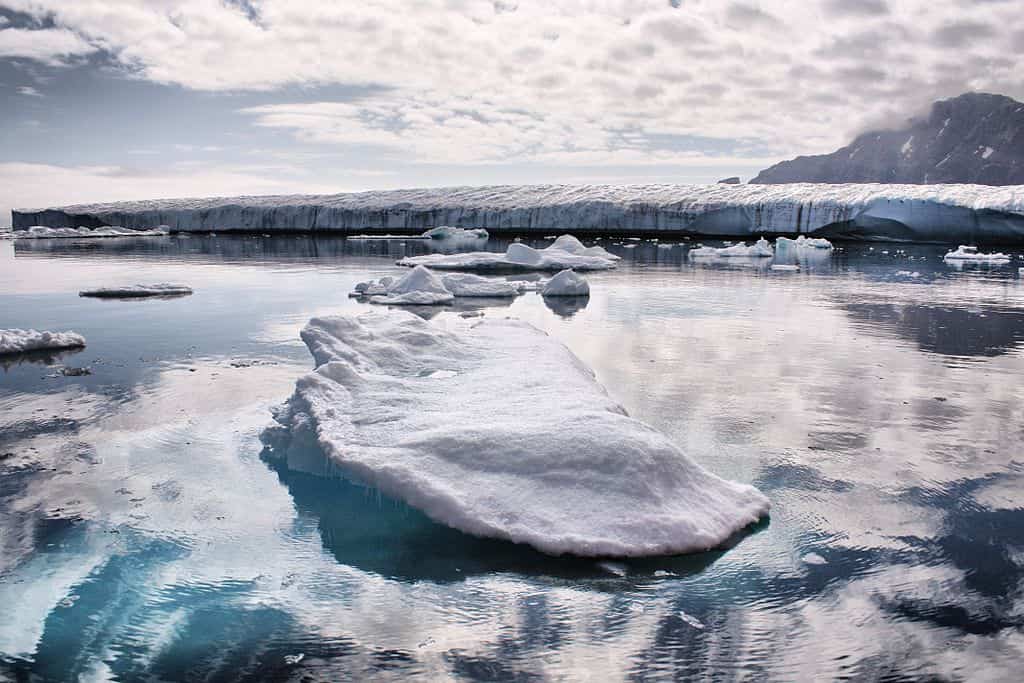The Greenland and Antarctic ice sheets are shrinking at a worryingly fast pace, according to a report from a team of international scientists. Ice loss has increased fivefold since the 1990s, and now accounts for a quarter of sea-level rise, they said, “without a doubt” due to climate change’s role in accelerating ice sheets’ rate of melting.

Using estimates from 50 satellites, the researchers found the polar ice sheets lost 7,560 billion tons of ice between 1992 and 2020. This is equivalent to an ice cube measuring 20 kilometers on each side. The ice sheets have together lost ice in every year of satellite record, with the seven highest years of melting happening in the last decade.
The ice lost during the study period raised sea levels by 21 millimeters, the researchers found. Almost two-thirds of this (13.5 mm) was because of the melting in Greenland, and one-third due to melting in Antarctica (7.4mm). This brings risks to coastal communities around the world, forced to adapt to a new reality, the researchers said.
“Ice losses from Greenland and Antarctica have rapidly increased over the satellite record and are now a major contributor to sea-level rise,” Inés Otosaka, who led the study, said in a media statement. “Continuously monitoring the ice sheets is critical to predict their future behaviour in a warming world and adapt to the associated risks.”
Record ice loss
The findings are part of the latest assessment of the Ice Sheet Mass Balance Intercomparison Exercise, or Imbie. This project, supported by the US and European space agencies, regularly reviews the state of the planet’s ice sheets. It’s the third update of the report, collating and reviewing all available satellite measurements.
From 1992 to 1996, the two ice sheets, which hold almost all of the world’s freshwater ice, were shrinking by 116 billion tons a year, two-thirds of it from Antarctica. Now, from 2017 to 2020, the newest data available shows that the combined melt reached 410 billion tons a year. The problem is getting worse as regional temperatures increase.
The worst year for melting was 2019, when ice sheets lost a shocking 612 billion tons of ice. This was driven by a heatwave in the Arctic, which led to 444 billion tons of ice being lost from Greenland. Antarctica lost 168 billion tons due to the continued speedup of glaciers in West Antarctica and melting from the Antarctic Peninsula.
Otosaka told CNN that the Greenland ice sheet will likely continue to lose ice, but said they aren’t sure what will happen to the Antarctic ice sheet, where they have “higher uncertainty”. However, if certain warming thresholds are crossed, this could trigger potentially irreversible feedback mechanisms, she added, calling for urgent action.
The researchers said they plan to repeat their assessment every year to provide the scientific community with the very latest estimates of polar ice losses. “IMBIE will help to monitor these critical regions, where we’ve reached a point where abrupt changes can no longer be excluded,” Diego Fernández, study author, said.






